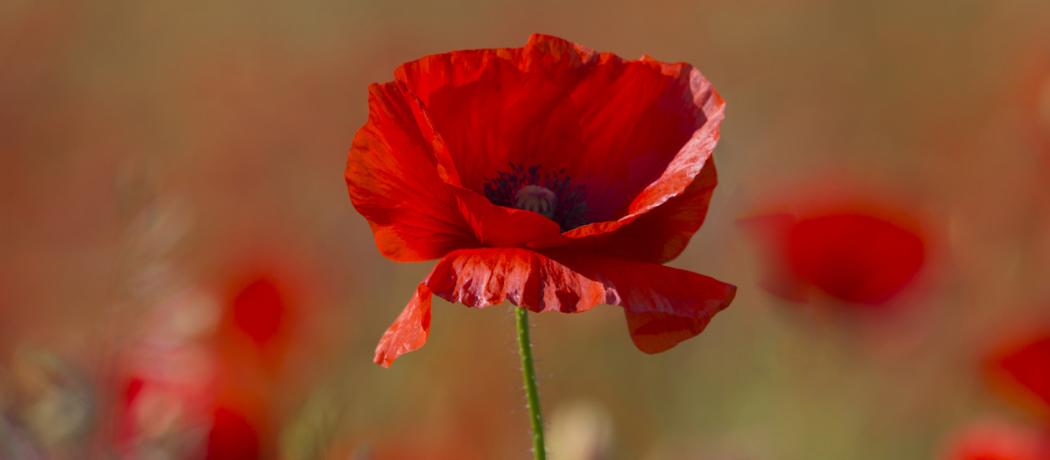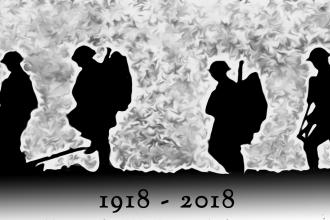On 11 November we recall the end of World War I and honor the veterans of both world wars. This year I will also lift my glass to honor Lt. Col. Joan Kennedy, Canada’s first female soldier.
She was born Joan Barbara Fensham in 1908 in Middlesex, England. When she was a teenager her father moved the family to Victoria, BC, where she finished high school, became a telephone switchboard operator, and then an accountant. In 1929 she married Norman R. Kennedy, an engineer, and settled into the social scene in Victoria.
In early 1939 the threat of war was in the air. Kennedy joined other like-minded women in Victoria and formed the British Columbia Women’s Service Corp. She assumed a leadership role and without any government support started a training program for young women to assist the military in noncombatant roles. The war exploded in September 1939 and the women’s patriotic preparation to serve in various roles caught on in other provinces. Kennedy spent close to 2 years trying to persuade politicians and the military to follow the example of the British Armed Forces, where half a million women serving in supportive roles. Finally, in August 1941, the Canadian government authorized the formation of the Canadian Women’s Army Corps (CWAC).
Elizabeth Smellie, matron-in-chief of the Canadian Army Nursing Service, was appointed to organize administrative details, which she soon turned over to Kennedy, who then became the first woman to receive a Canadian Army commission at the rank of lieutenant-colonel.
Recruits to this fledgling women’s army had to be British subjects (as all Canadian citizens were at that time) without dependents, between 21 and 40 years of age, a minimum of 152 cm tall, weigh at least 48 kg, and have a grade-8 education. Kennedy’s emphasis was on training women for noncombat duties such a clerks, telephonists, cooks, drivers, and motor mechanics, but also as specialists in military tasks such as code-ciphering or map-making. Female recruits received 90 cents per day (male army recruits received $1.30).
The first group of 350 CWACs went overseas in November 1942 to serve in London. Eventually 4000 were stationed overseas, including smaller groups in northwest Europe and others in Italy. No CWACs were killed in action, but four were injured in a V-2 missile attack and 25 died during the war from other causes.
Initially Kennedy expected that her troops would return to their civilian jobs or their lives as housewives after the war, but she soon came to recognize the women’s capabilities and began to visualize eventual equal status for women in the Canadian Armed Forces.
The CWACs were disbanded after the war in 1946, to be reestablished in 1949. In 1968 the three branches of the Canadian Armed Forces were unified, and the women became soldiers, sailors, and air force personnel. In 1989 women were integrated into all aspects of the military except for submarine service. Opportunities in that branch of the navy opened up for women in 2001.
Joan Kennedy left the army in 1946 to return to civilian life. She died suddenly of a heart attack in October 1956 at age 48. In August 2001, on the 60th anniversary of the formation of the Canadian Women’s Army Corps, a military honor guard paraded at the burial place of Canada’s first female soldier, Founding Commandant Lieutenant-Colonel Joan Kennedy.
—George Szasz, CM, MD
Suggested reading
Allinson S. Lt. Col. Joan Kennedy – Canada’s first female soldier. Warwriting. Accessed 10 November 2020. warwriting.blogspot.com/2011/01//normal-0-microsoftinternetexplorer4.html.
Government of Canada. Women in the Canadian Armed Forces. Accessed 10 November 2020. www.canada.ca/en/department-national-defence/services/women-in-the-force....
Wikipedia. Canadian Women’s Army Corps. Accessed 10 November 2020. https://en.wikipedia.org/wiki/Canadian_Women%27s_Army_Corps.
This post has not been peer reviewed by the BCMJ Editorial Board.


